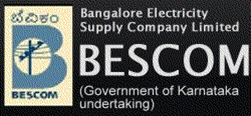HOT TOPICS
SPOTLIGHT AGENCIES
Meeting with Prof.Ashwin Mahesh
Written By Naveen - 21 March, 2009
Bangalore BMTC Bus BRTS Abide Analysis Big10 public transport
As part of ABIDe, Prof.Ashwin Mahesh appears to have thoroughly understood all the limitations of having to deal with issues for commencing new city transport services within the existing framework of our polity & citizenry.
He touched upon prevailing operational practices & existing mindsets within BMTC as also those of the expectations of people with regard to BMTC services. He dealt with various issues in an extremely systematic & orderly way & explained all aspects – indeed in a most impressive manner.
In short, as regards, Big-10 & Hop-On /Off services (commonly referred to as ‘Kendra Saarige’), the efforts appear to be well aligned with the city’s needs & commuter interests & might be a precursor for better things ahead, & in this respect, the services seem to be pointing in the right direction.
Some of the aspects he explained in detail were as follows :
- Lack of appropriate professionals & planners within the city administration as also within the BMTC, necessitating the need for an assisting body such as ABIDe or the erstwhile BATF.
- The difficulties for planning & operating local area feeder services leading to the main arterial roads where the Big-10s operate – since this would involve additional tickets & higher travel costs to commuters, though this is inevitable. As regards feeder routes, Praja could play a role in identifying feasible routes in the many suburbs.
- The obstacles for removal of existing superfluous destination-oriented services after the introduction of Big-10 routes. This was mainly due to demands from local residents & heads, who insist on exclusive direct services from their local areas to the city center/s, even if they were infrequent, as has been the norm for several decades. Whilst currently there is likely to be some degree of resistance to accept immediate changes, duplication of routes could be removed only with efflux of time & once the benefits of these services are accepted by & large by most commuters.
- Lack of political will to take unpopular, harder decisions & enforce them, such as re-introduction of parking charges in the city.
- The difficulties with regard to introduction of right of ways for buses to escape intersection delays by providing bus-exclusive underpasses as also dedicated infrastructure such as bus lanes, though these are in the planning stages & may become a reality in due course.
- The possibility of introduction of tickets for a fixed time period rather than by trip & distance, though this may not have a large no. of takers since people typically use bus rides for work commutes by the trip or with monthly passes.
- The general focus & efforts to change the long-held biases in commuters’ minds that transfers during a trip were unwelcome & that it would result in loss of time with additional cost. The corollary here is that more frequent bus services can be operated if the bus route patterns were less diffuse than with the present destination-oriented services. Thus, transfers were inevitable if wait times at bus stops have to be shortened, & common ticketing (ie. single ticket for the entire trip) could assist.
- BMTC staff earn incentives based on rider-ship & ticket sales & some routes attract higher passengers than others. Thus, there is a system to employ staff rotationally to ensure that such benefits are divided across all staff. This sometimes results in certain inefficiencies, but solutions are difficult as staff welfare is equally important. An example he quoted was the use of the nearest bus depots that could not be used exclusively for the more profitable routes, such as the Big-10s that are anticipated to be profitable in the future.
- The obstructions to fast bus entry & exit at bus stops with other vehicles stopped at bus stops, typically private buses waiting at stops for a sizable commuter load to commence a trip. An example he quoted was the bus stop at Kasturba road near Corporation (Hudson circle).
- Possibilities for allowing pedestrians to get to bus stops more easily through parks (instead of having to take circuitous routes around it) were also being explored.
- Eight of the ten Big-10 routes were already in operation & the remaining ones may commence operations soon. There are proposals to start these services on other arterial roads such as Hennur road & the total no. of services may eventually be more than 10.
- The Big-10 service on old airport road was already seeing high commuter loads & the no. of buses on this route have been increased.
- The idea of running Big-10s across the city to cover two arterials in a continuous, uninterrupted manner, whilst skimming the central area was also being explored.
- Possibilities for running circular routes in concentric circles away from city center were also being checked.
- Prof. Ashwin emphasized that promotional efforts such as costly advertising & running the services for a short period with low fares were neither possible nor necessary.
The new bus services aside, the neglect of the welfare of pedestrians with diminishing sidewalks on streets with each road widening exercise were also discussed. Prof.Ashwin mentioned that no pedestrian issues were encountered with the Silkboard flyover since it had only one set of ramp/s. Also, along Race-Course road, the pedestrian walkway width was being increased.
However, at many other flyovers that have multiple ramps, such as the ones on old Airport road, Dairy circle & at Jayadeva hospital, pedestrian facilities are non-existent. The new pedestrian underpass on Nrupathunga road had it’s exit along the road median & this was posing difficulties.
Following the session with Prof.Ashwin, a Praja meeting was also organized.
Conclusions :
Experiences in several cities overseas have shown that car users will not voluntarily opt out of their cars unless restraints & barriers are set up & pushed in place for car use, such as high parking costs, congestion /cordon pricing, longer travel time, etc..
The Big-10 services, along with the Hop-On /Off & circular routes may some day be successful in bringing down vehicle volumes in the city after it inches ahead progressively with incremental steps being taken by planners & acceptance by the many different groups of commuters. The desirable quicker shifts from private to public modes for commuting to free up our choked roads might thus, take a long while to happen on the ground !
COMMENTS

Was this a different meeting than held yesterday @ IIM?
kbsyed61 - 21 March, 2009 - 22:18
Naveen,
Following the session with Prof.Ashwin, a Praja meeting was also organized.
Is that meeans, this summary refers to a different meeting than one that was held yesteday @ IIM?

blrsri - 22 March, 2009 - 00:21
Naveen..thanks for putting together such a detailed post on this..guess this minutes is as detailed as it can get!
There are two main concerns which are around point 2 & 3 in your post which needs attention...
About point 2, regarding the ticket costing structure.. volvo vajras now give tickets which has details on the journey lenght in kms etc..cant we use this precise data to cost per km ticket price? This will rationalize the ticketing strucutre.
Guess Murali sir and others sure will have better workable thoughts around this..
About point 3, about the relucatnce of people to change, probably this needs a campaign from Abide to drive the message..we as Praja can aslo assist them in that..
Probably all it needs is meeting the local heads like the corporator and others to convince them of this plan. I guess their main concern will be around reliability & speed of the big 10 service and ticketing..
I am sure Prof. Ashwin can run some pilot presentations(if possible in Kannada) to these leaders and then Abide along with institutions like Praja can spread the message!

Interaction with Prof Ashwin Mahesh
psaram42 - 22 March, 2009 - 03:46
Many of us came by BMTC busses. However for a person like me who last took a bus several years ago it never crossed mind to do so. I was late by 15 minutes and missed many points which Naveen’s excellent post has made up for us who were late. Thanks Mr. Naveen.
BMTC with the task of providing solutions for Bangalore’s commuters definitely needs management professionals’ help. BMLTA in fact has such qualified people in its employment. In this ABIDe initiative has come in handy, with Prof Mahesh who eminently fits the bill.
I have tried below to put some point as I gathered from the presentation:
1. Big 10 is direction oriented system and requires bus changes
2. There is Parallel Karnataka sarige too.
3. The target is to reduce 12 to 15 min frequency down to 4 min for the Big-10 busses.
4. Bunching of Big-10 busses requires higher frequency. (Why not removal of bunching?)
5. Political aspects
a. Big-10 is running well
b. Reasonably predictable
c. Huge victory
d. Demographic change
e. Political will required in greater measures
f. Hard decision making is hard to come by
g. Empathetic Middle management
h. Strengthens BMLTA
i. RWA interaction is vital
PSA

Naveen - 22 March, 2009 - 04:20
Syed :
The meeting described above was with Prof.Ashwin at IIM. The praja meeting later was organized by pranav for praja members present there to discuss action items & progress.
Blrsri :
Ticket Costing - I think this can be done, but it would add expenses to operations since all bus conductors will need to be provided with automatic ticketing machines. Thus, ticket costs will go up & this may not be acceptable to a majority of the commuters using ordinary services. On the volvos, this is possible as the class of service is higher & commuters using these services are willing to pay for the additional value. Mr.Murali & others - any further inputs on this ?
People's reluctance to change - this was expected & Prof.Ashwin summed it up very well. Any change will always be opposed initially, & only when alternate system/s are actually seen working better, will the existing biases be discarded. So, the system has to work it's way through all the opposition, make inroads & prove itself competitive & better before it becomes acceptable. As you mentioned, praja can assist, but the target group/s here are those from peri-urban areas & nearby villages. These people must also be reached & I think you are correct - some promotion in kannada may be very useful.
I think Prof.Ashwin is already doing a lot ! - maybe we should chip in here & assist ABIDe in spreading the word.
Psaram42 - Thanks, sir.

can only lead the horse to the water
murali772 - 23 March, 2009 - 18:13
Naveen - If you wish to continue to maintain that BMTC services are better than the bus services in Mangalore (South Kanara in general), Kochi, Hubli-Dharwar (Bendre Nagara Saarige), in terms of connectivity, inspite of the overwhelming evidence to the contrary, then I think it's going to be difficult to make any movement forward.
In terms of rash & negligent driving, yes, it will be a neck to neck contest. But, that's because of the stiff competition in those cities under a fixed and generally unviable tariff regime, and inspite of BMTC's monopoly regime in Bangalore.
As for your other contentions, I expect the following extracts from the the report on ‘Bus Transport Systems’ displayed on the website of the Union Ministry of Petroleum & Natural Gas (www.petroleum.nic.in/ch_1...), should answer most.
1) Clearly, there is a strong case for promoting private enterprise in meeting transport needs in urban areas.
2) An aspect of public policy that impacts on provision and expansion of public transport either by state owned utilities or by private entrepreneurs, relates to the unviable fare structures imposed by the authority.
3) With improved efficiency, the fare structure can continue to remain low while still providing for overall viability of the operations.
And, like I had stated earlier, higher service efficiency is what is ultimately more beneficial to the common man. What is the point of having cheap fares (and, BMTC fares are not exactly cheap) if ultimately the commuter lands up having to take auto's regularly because of buses not showing up?
Well, for your information, the London bus services are over 90% privately owned and operated. Besides, while comparisons of airline services etc (catering generally to the upper classes) can be made against those of cities in advanced countries, our bus services are catering to the needs of a much poorer lot, and consequently, we have to evolve our own models. In that respect, Mangalore and Kochi can possibly provide the answers if the license-permit raaj is a bit relaxed. Tatas and Kingfisher can follow in cities like Bangalore to wean the upper classes from their cars, on usage of which curbs will have to be introduced sooner than later.
I have written enough on the subject. Like I have said earlier, very few have contested the capacity of the private players to meet the challenges. The problem clearly is how to dismantle the present regime that's so well entrenched in the clutches of the vested interests.
Muralidhar Rao
PRAJA.IN COMMENT GUIDELINES
Posting Guidelines apply for comments as well. No foul language, hate mongering or personal attacks. If criticizing third person or an authority, you must be fact based, as constructive as possible, and use gentle words. Avoid going off-topic no matter how nice your comment is. Moderators reserve the right to either edit or simply delete comments that don't meet these guidelines. If you are nice enough to realize you violated the guidelines, please save Moderators some time by editing and fixing yourself. Thanks!





